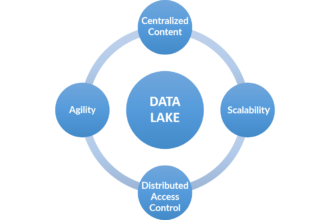Data experts and executive management teams know that for businesses to stay competitive and dynamic, data must be not only well understood, but also effectively applied. One of the major challenges for anyone working with data is not only to enlighten others about the story it tells, but also to effectively persuade executive leadership to turn those insights into actions.
Data experts and executive management teams know that for businesses to stay competitive and dynamic, data must be not only well understood, but also effectively applied. One of the major challenges for anyone working with data is not only to enlighten others about the story it tells, but also to effectively persuade executive leadership to turn those insights into actions.
Big data was rated “very important” or “extremely important” to the digital transformation of businesses by nearly 90 percent of respondents to a recent survey, and 82 percent concurred that data is a valuable resource. For companies to stay on top of this big data movement and ride that wave to success, long-held beliefs about the value of experience and the nature of expertise will have to change.
Smart leaders see that the data revolution is also a management revolution. To ensure they get the most out of their data, you (as a data scientist) need to be able to recognize and respond to typical roadblocks, such as people clinging to old ways of thinking, clashes between cultures, and gaps in skills and knowledge.
Knowing what to do if you encounter this issue can help smooth disconnects between management and data experts and ensure a bright future for the business’s bottom line.
Seeing Eye to Eye
The integration of data science into an organization is a relatively new development that involves new personalities, skills, processes, technologies, and their related investments, so it’s bound to cause some level of disruption. Executive leadership may lack a clear understanding — and perhaps even respect — for the role of data science. Likely, these leaders simply haven’t had a chance to get caught up.
Moreover, while the idea that no computer is ever going to beat a sharp manager’s instincts that were honed over many years in the same industry contains some truth, human bias sometimes prevents leaders from making evidence-based decisions that will benefit the company. Both new terminology and a low comfort level with the relevant technology may contribute to the communication gap as well.
Getting managers to understand that data analysis reveals a whole new layer of insight to which they can apply their skills can be a challenge. But with clear communication, you can demonstrate how the analysis of thoughtfully gathered data allows for evidence-based decision-making and leads to major advantages in the marketplace.
Your average data scientists know more about statistics and their role in the analysis of data than most executives were ever taught. Executive leadership needs their expertise in technology, data, and actionable insights. They won’t often come out and ask for that, however. Successful data scientists volunteer to fill this vacuum that is so clearly present in many companies, and their careers benefit greatly from it.
Bridging the Gap
Having your data understood and utilized is critical, but there are often barriers between what your data is telling you and your management’s ability to act on it.
One potential barrier is the way key decisions are typically made in large organizations. Research suggests that despite the age of transparency we live in, for reasons both good and bad, a CEO will make decisions by consulting a small insulated group of trusted advisers. These groups usually talk behind closed doors, which prohibits transparency, and without data to back up their decisions, their choices can be fraught with human bias. If they aren’t talking about your data, then your data can’t be doing its job.
To create an evidence-based business approach, data scientists can’t just collect and analyze the data — you must also make the data available, easy to understand, and easily leveraged by this “kitchen cabinet.” That means going the extra mile to transform data into something management can’t wait to get its hands on.
Like a teacher has to keep the class’s attention with exciting lessons, the burden is on you to make your findings appealing and easy to get creative with.
As the marketing leader of one of the world’s largest insurance companies once told me, “Build a magnet!” He went on to say that you have to create your own demand in the company. He didn’t want to build a bunch of stuff and force it on the company, so he made sure he had an internal customer first for any data or insights provided.
Getting Your Priorities Across
These key points will get you well on the way to closing the communication gap:
1. Make communication a part of your job. Don’t wait to be asked what you’re up to. Reach out often, and do it in ways that fit within the culture. “Lunch and learns,” memos, presentations, and retreats are common vectors for this outreach.
Remember to be engaging and even entertaining. You want management to be enthusiastic and excited to hear about your work. You’ll know you’re succeeding when they come to you and ask for more. It’s also important to understand your audience members. Start by speaking their language. Avoid industry jargon, and speak to them on their own terms. For example, if you’re making your case to the chief financial officer, for any investment you propose, there better be all sorts of conclusions on the return on investment; net present value; and earnings before interest, taxes, depreciation, and amortization.
2. Make your data fun. A movement has certainly begun in this area, propelled by the mobility and consumerization of many aspects of our lives. For example, political polls and weather charts expressed in clear, colorful graphics outcompete their more traditional counterparts in viewership.
You can make this principle work for you. Depending on what you’re trying to show, you can create a web-based, interactive, or mobile-friendly visual; a heat map; or a slider-enabled graphic that shows why your data is important in one easy glance.
3. Avoid stigmatizing. Different groups in one workplace might view one another as being out of the loop or as thinking about the business incorrectly. Such divisiveness can cause a lot of problems. For example, a Salesforce study found that 86 percent of executives blame workplace failures on poor communication and collaboration.
The best thing to do in this case is to put differences aside. An “us vs. them” mentality such as marketing vs. the “data people” only leads to friction and destruction.
4. Eliminate silos. Silos are another kind of cultural breakdown. Groups or individuals can sometimes strategically protect their exclusive access to information.
You’ll need to be clever and persistent to combat this for the sake of transparency. Even when you do, some silos will remain. Even though you’re trying to create full inclusiveness, this attempt at increasing transparency might make some feel threatened, which can undermine your efforts to strengthen data-based predictions.
Having your data understood and successfully applied is vital to building a strong data culture. To make the biggest possible impact, learn to spot communication gaps and develop strong habits of proactively getting your information in front of key players to bridge those gaps.







